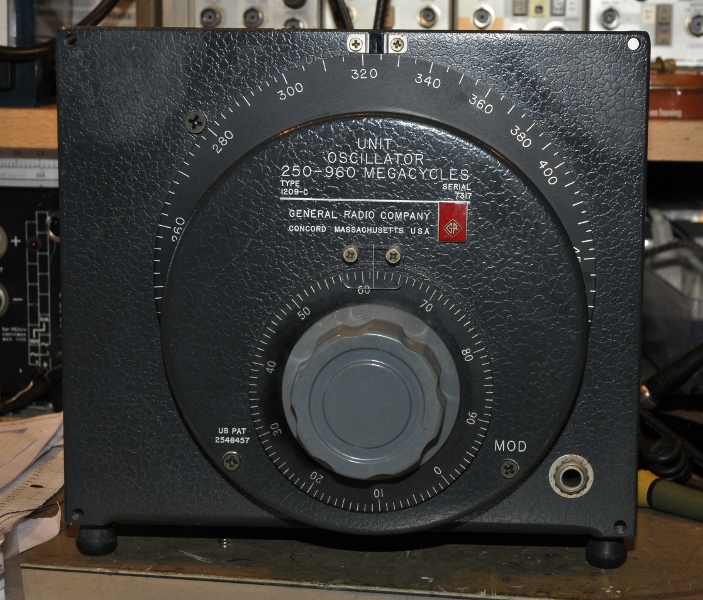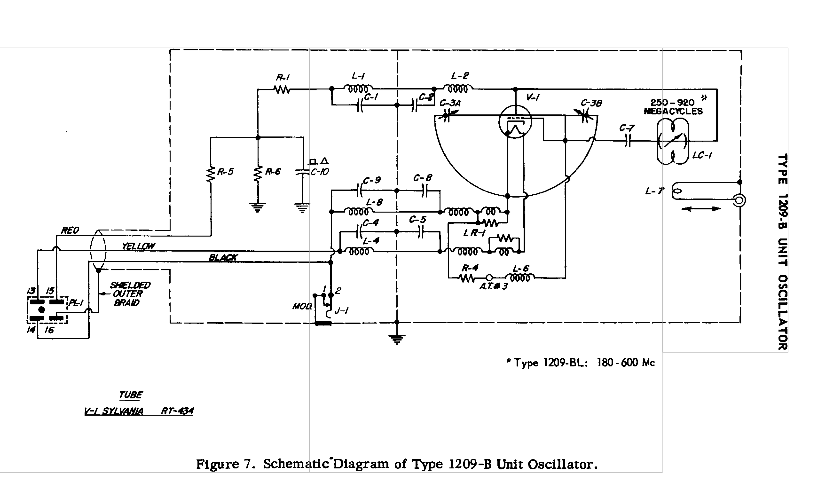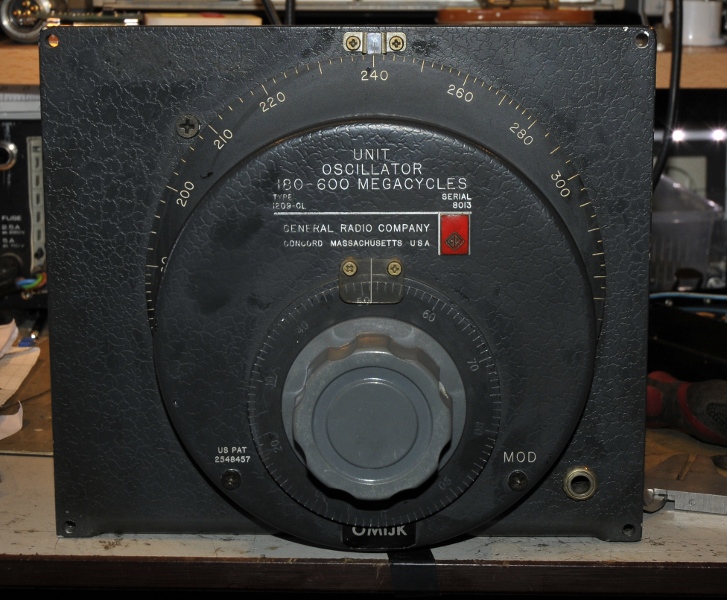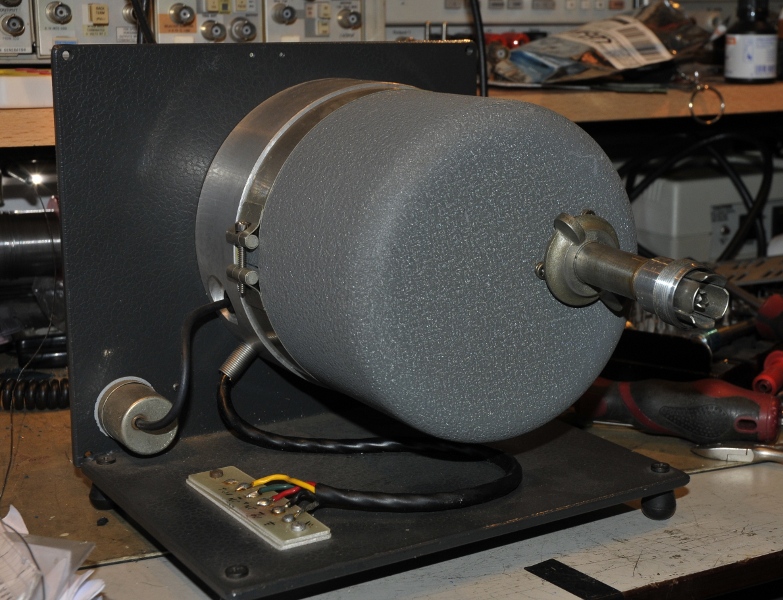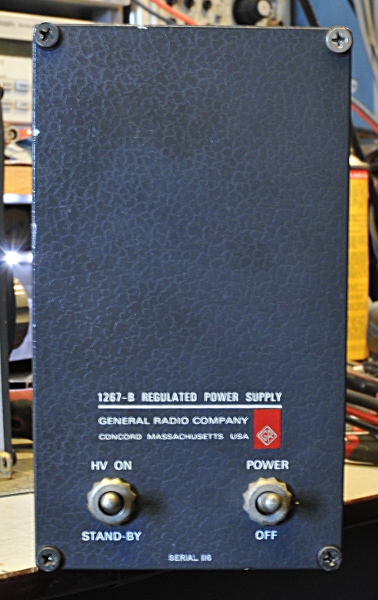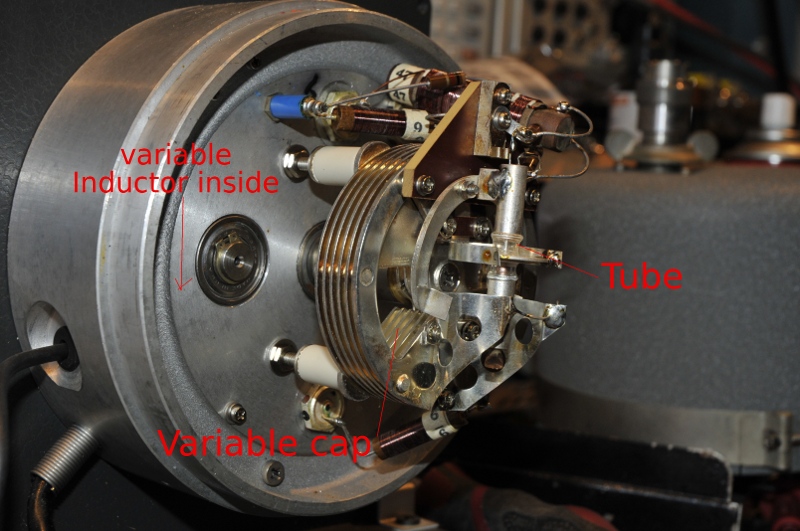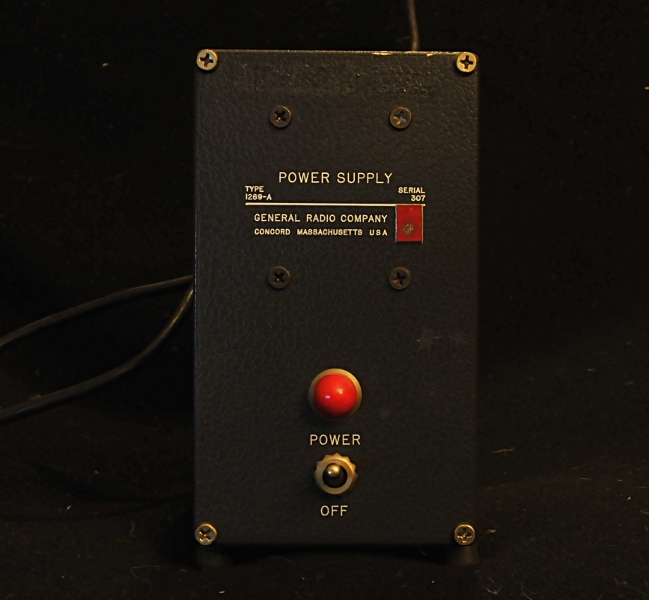This description is from my good friend Ken who is a GR collector too:
These oscillators are interesting. As you surely know, GR was not as successful in oscillators as HP, even though they tried to succeed in this market. I found a book with some analysis of this, and it goes way back to a desire by GR to focus on the beat oscillator because it made it possible to cover a wide spectrum in a single band. This was more expensive than the HP approach, but GR was a very proud company that stuck by the beat design even when it was not performing as well in the market. (They are suitable for mechanical drive, which is great for spectral response studies if you have the accessory drive and plotter.) Ultimately, GR came out with "unit" oscillators that have separate power supplies in order to compete at a lower price level.
The Oscillators are tube operated, very stable but there is no filtering. The attenuator on the back is done by decreading de distance from pick up coil to oscillator. Power is around +10dBm.
The mod bus is for modulation.
They have no powersupply. You need to feed them 300VDC and 6,3VDC. Normaly there is a piece of wire with a jones connector that plugs into the side of this regulated PSU:
The inside of the unit oscillators is a piece of art:
To bad the tube of the 1209C seems to be dead. The CL works great but the scale versus oscillator needs alignment.
Update Febr.2014: The 1209C is working again. The tube was probably not the problem. I opened the whole oscillator. You need to remove the scale cover on the front. Then remove the scale (two (inch sized), allen bolts on the ax behind the scale. You need a long high quality hex key. Then some screws and you can separate the aluminum housing from the panel. Behind it are a few resistors and an electrolitic cap. In my picture I write there is a variable inductance because I read that on the web but that is for an other type. Allthough they look alike on the outside, they used all kind of (very clever) thechnics on the inside. Any way, there is no variable inductor in the 1209C. Only a very nice metal sculpure that functions as tubeholder, variable capacitor, feedback coupling, Inductor and mounting for the rest. Art with a big A.
The oscillator is very sensitive about the location of parts . I removed the tube and connected the GR1602B to the output tuned at 450 MHz. Then manipulated all the parts until I got a reaction on the detector if I tuned the unit. I had no clue if that is the right way but without a manual you have to improvice. The result was that it oscillated when I resoldered the tube. It was 5 MHz to low so I adjusted the scale on its shaft until it was correct. To get a stable signal over a wide range you need to bend wires, resistors and metal mountings etc. Moving like in less then 1 mm, not fold something to the other side. It is very, very sensitive and I the paracitics of all parts are part of the design. Or better are used in a positive way for the design. The output is not very clean on harmonics but it is very stable.
They sold GR-874 filters and component fixtures for you to add your own filter. They did not filter because they used the harmonics to operate on higher frequencies. Above 500 a 600 MHz the 3rd harmonic is as strong as the first on my 1209C, so it is usable on 3x the fundamental. A simple HPF if you need a cleaner signal.
The brochure down here is rather funny when you talk about the 1209C. The tube in the C and CL is mounted up side down compared to the B. And the brocure talks about a pricwe without a tube. I do not think they sold the 1209C or CL without a tube because it is not a very easy job to get it perfect without a spectrum analyser or it’s ancester.
More information about these oscillators and a bit of GR history in the link below:
http://www.cs.cmu.edu/afs/cs/Web/People/ram/electro/gr/
A brother from the psu on top of this page

